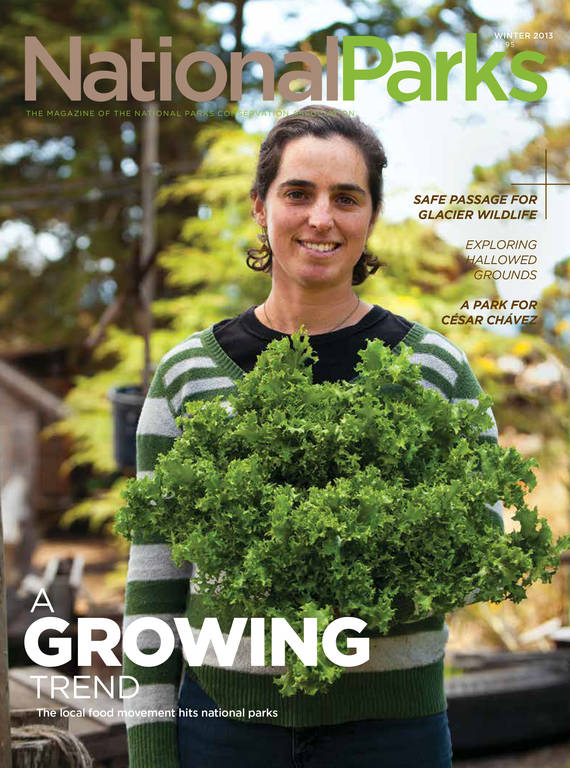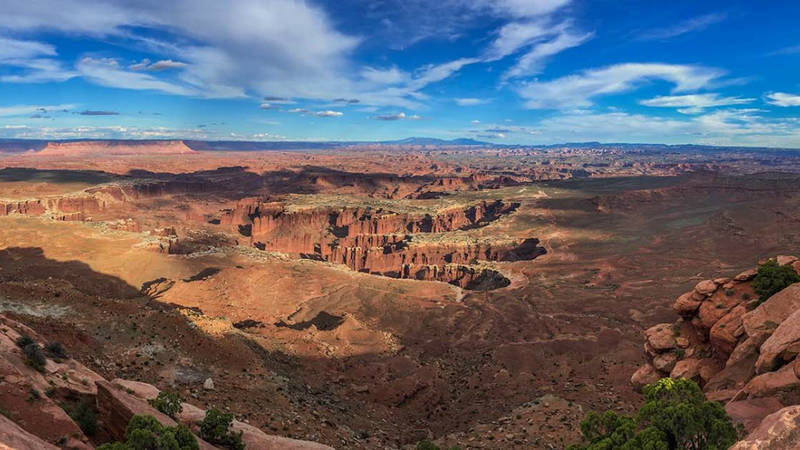Winter 2013
Picture This
Design students reimagine the park experience for the 21st century.
Few of us think of national parks as being “designed.” Yosemite and Arches were carved by the forces of nature. And those hundreds of historic sites gained attention because of what happened before they were designated, not after. But they are, after all, physical spaces that we experience with all of our senses, and that experience is almost always part of a concerted effort. Natural sites require roads and trails to get people from Point A to Point B, and visitor centers offer maps, schedules, a short film, and yes, those all-important restrooms. Historic sites are far more than the pages of a text book slapped on the wall—the best of them take us by the hand and usher us into a new world. That doesn’t happen without some serious effort.
At least, it shouldn’t.
“Five years ago, a number of us recognized that design in the Park Service was becoming a lost art,” says Shaun Eyring, chief of Resource Planning and Compliance in Philadelphia. “The agency was once a real leader in public park design, and we wanted to revive that connection to the early days when Park Service designers and private landscape architecture professionals like Frederick Law Olmsted, Jr., thoughtfully designed access to Western parks like Yosemite, Yellowstone, and Glacier. They had a way of looking at a place as a whole, choreographing the visitor experience without destroying the scenery, and therefore protecting the very reasons these places were set aside. As parks look to welcome a more diverse population and address issues like climate change and sustainability, the design of our national parks will have an enormous impact on our success.”
So Eyring joined with colleagues in offices across the country to craft an approach to re-engage Park Service employees in thinking about the evolution of park design—the one discipline that lacked any standards or guidelines in an agency flush with guidelines. The effort kicked off with two conferences that engaged thought leaders, including experts at national, state, and local parks, private design firms, colleges and universities, and nonprofit organizations including NPCA. It ended with a collection of six design principles and a directive to test and refine those principles even further. Alex Brash, director of NPCA’s Northeast regional office, and staff at the nonprofit design education and advocacy group Van Alen Institute suggested a student competition that would engage the next generation of park visitors.
THE ASSIGNMENT
“We laid out a number of broad questions for the students,” says Jeff Byles, Van Alen’s interim executive director. “‘Who are the users of the national parks today? How can we make parks more accessible? What does sustainability mean? What role does technology play in the park experience?’ All of these questions help us think about what the national park of the 21st century can be.”
The Rutgers team focused on Hopewell Furnace, which tells the story of the Industrial Revolution, among others. There, students devised smartphone apps and billboards that incorporated an innovative branding scheme drawn from the coded quilt patterns that safehouses posted to signal runaway slaves along the Underground Railroad. The students also suggested that visitors enter the site from a workers’ point of view, rather than starting at a visitor center overlooking the grand Ironmaster’s house and iron-making complex.
Students from Cornell’s design studio were invited to stay in park housing during their visit, but they insisted on camping, so they could truly experience the landscape. From their work emerged a proposal for a roving mobile unit that would travel beyond the park boundaries to offer educational opportunities to disadvantaged communities, making the park more accessible.
At Nicodemus, a site devoted to the first settlement of freed slaves after Civil War Reconstruction, students from the City College of New York (CCNY) were dropped off in the middle of a wintry Kansas landscape to survey the land, still home to two dozen descendants from the original town. Their experience led them to design three trails that symbolize the site’s past, present, and future. One would recreate the historic 5-mile trek that the earliest settlers made from the nearby town of Ellis—a journey that could be incorporated into the “Homecoming” celebrated every June, when hundreds of descendants return to the park. “This project definitely opened my eyes to the parks,” says Grace Ng, now a second-year student pursuing a master’s degree in landscape architecture at CCNY. “I knew about the stunning beauty of the natural parks, but I wasn’t aware of the vast richness of these amazing cultural and historical resources. At Nicodemus, we were able to talk to people in the community and think about all the different forces that go into making a historic site viable and sustainable. And at the end of the project I was able to go back to the site and present our class proposal, and even get feedback from the community—it was a great experience.”
Some parks have already put the students’ smaller innovations to work, and several bigger ideas are being considered during the creation of the parks’ management plans at Hopewell Furnace and the Civil War Defenses of Washington. Eyring and her colleagues are also considering inviting park superintendents from across the nation to bring specific, immediate design challenges to a workshop, where students and staff from top design schools would help craft solutions on the spot. So there’s an outside chance you’ll discover a new-and-improved park experience on your next summer vacation.



